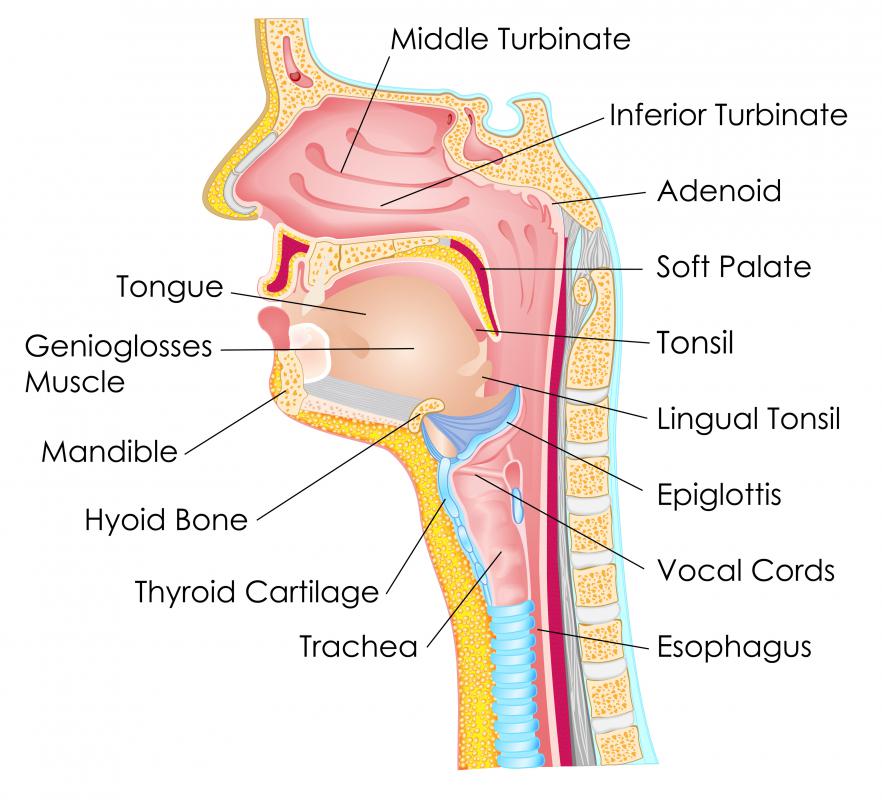At WiseGEEK, we're committed to delivering accurate, trustworthy information. Our expert-authored content is rigorously fact-checked and sourced from credible authorities. Discover how we uphold the highest standards in providing you with reliable knowledge.
What Is the Agger Nasi?
The agger nasi, also known as the nasal ridge and the nasoturbinal concha, the agger nasi, is a raised ridge found in the nasal cavity. It functions along with other nasal conchae, or nasal turbinates, to divide the nasal passage and force inhaled air to travel in a steady controlled pattern around the temperature-controlling nasal tissue and the cilia. Cilia are hair-like protuberances that project from the larger cell bodies that line the nasal passage and serve to push air through the nasal chamber.
The nasal fossa, or the nasal cavity, is a large air-filled cavity that extends behind and above the nose. The purpose of the nasal cavity is to permit respiration and to warm cool air, cool warm air, and to filter out the debris that's in inhaled air before it reaches other areas of the respiratory tract. Within the nasal fossa are a series of nasal conchae which are long, thin, curled, and sponge-like shelves of bone that protrude into the nasal pathway. Conchae are located on both sides of the nasal cavity, which is divided into left and right sides by the septum, commonly known as the nose bone.

The nasal conchae extend out from the lateral nasal wall toward the middle of the nasal chamber and turn downward, which helps push air through the nasal cavity. The formation of the lateral wall can be variable, but generally it has three pairs of conchae in addition to the agger nasi. The superior nasal concha is the smallest and is located closest to the nose. The inferior nasal concha is the largest and is located above the maxilla, or upper jawbone, from which it arises. The middle nasal concha is situated between the superior and inferior conchae, and the agger nasi is located toward the middle of the anterior, or front, edge of it.

The atrium of the middle meatus is an opening or chamber that leads into the middle meatus, which is a crevice or passage located between the middle and inferior conchae. Directly above the atrium of the middle meatus sits the agger nasi, which is formed by a mucous membrane, or a sheet of mucous-producing tissue, that covers the ethmoidal crest of the maxilla. The ethmoidal crest is a bony peak that connects the ethmoid bone of the skull to the middle nasal concha. The ethmoid bone separates the brain from the nasal cavity.
AS FEATURED ON:
AS FEATURED ON:












Discuss this Article
Post your comments